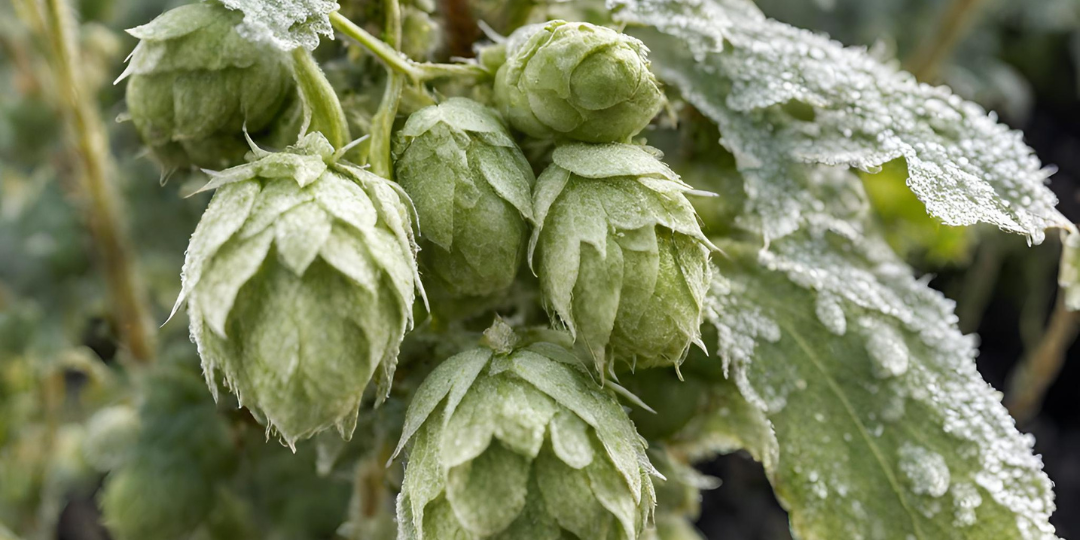As a hop grower, nurturing your hops from tender shoots to fragrant cones is a labour of love. Yet, lurking amidst the blooming bines lies a common enemy: powdery mildew. This fungal blight can wreak havoc on your crop, diminishing yields and compromising quality. But fear not, fellow cultivators, for armed with knowledge and proactive measures, we can defend our precious hops. Let’s delve into the depths of powdery mildew and emerge with strategies to combat this formidable foe.
Understanding Powdery Mildew
Powdery mildew, scientifically known as Podosphaera macularis, is a fungal disease that plagues hop plants worldwide. It thrives in warm, humid conditions, making it particularly problematic during the growing season. The tell-tale signs of its presence are powdery white patches on leaves, cones, and stems. Left unchecked, it can stunt plant growth, reduce cone quality, and even lead to crop loss.
Prevention is Key
The adage “an ounce of prevention is worth a pound of cure” rings especially true in the battle against powdery mildew. Here are some proactive measures to fortify your defenses:
-
Site Selection: Choose a well-drained location with good air circulation to minimize humidity and create an unfavourable environment for fungal growth.
-
Plant Spacing: Adequate spacing between hop plants promotes airflow, reducing moisture build-up and inhibiting powdery mildew development.
-
Cultural Practices: Maintain cleanliness in the hop yard by removing weeds and debris, as these can harbour fungal spores. Additionally, avoid overhead irrigation to prevent excess moisture on foliage.
-
Resistant Varieties: Consider planting hop cultivars known for their resistance to powdery mildew, such as Phoenix, to mitigate the risk of infection.
-
Monitoring: Regularly inspect your hop plants for early signs of powdery mildew. Early detection allows for prompt intervention, minimizing damage.
Effective Treatment Options
Despite our best efforts, powdery mildew may still find its way into our hop yards. When prevention falls short, swift action is imperative. Here are some effective treatment options:
-
Sulphur-Based Sprays: Sulphur fungicides are a cornerstone of powdery mildew management in conventional hop production. Applied preventatively or at the first sign of infection, sulphur disrupts fungal growth and spore germination.
-
Biological Controls: Beneficial microorganisms, such as Bacillus subtilis or various strains of fungi, can be employed to outcompete powdery mildew and suppress its proliferation.
-
Chemical Fungicides: For severe infestations, chemical fungicides may be necessary. Consult with local agricultural extension services or crop advisors to select appropriate products and adhere to application guidelines.
-
Cultural Practices: Pruning infected plant parts and removing them from the hop yard can help contain the spread of powdery mildew. Additionally, promoting plant vigour through proper nutrition and care enhances their resilience against disease.
-
Innovative Approaches: Research into novel methods, such as the use of UV light or plant extracts with antifungal properties, holds promise for future advancements in powdery mildew management.
Conclusion
Powdery mildew poses a persistent threat to hop growers, but armed with knowledge and proactive measures, we can effectively manage its impact. By integrating preventive strategies, vigilant monitoring, and targeted treatments, we safeguard our hop crops and ensure the continued abundance of our beloved brews. Let us stand united in our commitment to preserving the vitality of hop yards and raising a toast to the resilience of the hop-growing community. Cheers to healthy hops and bountiful harvests!
Kris Leach
A Plus Hops

